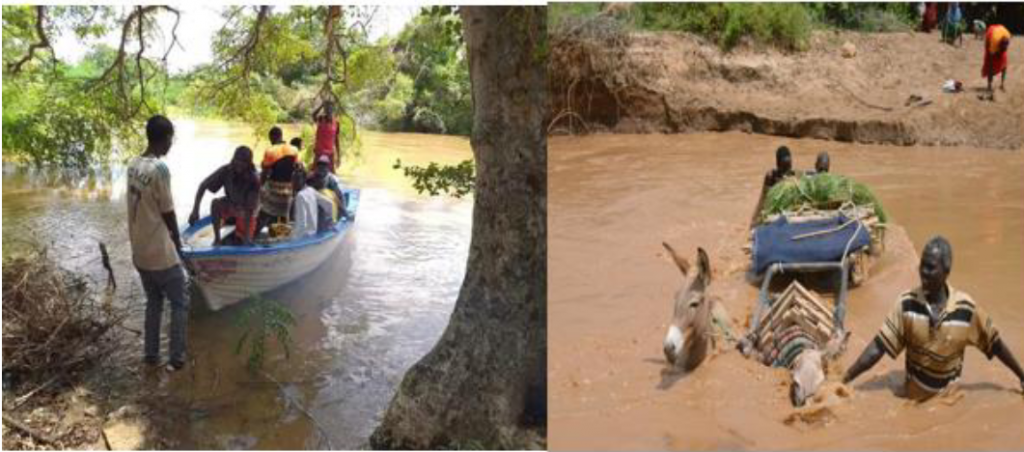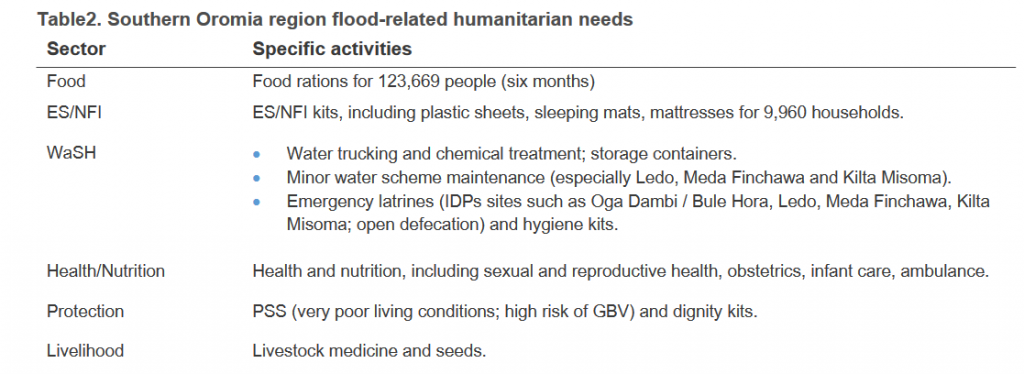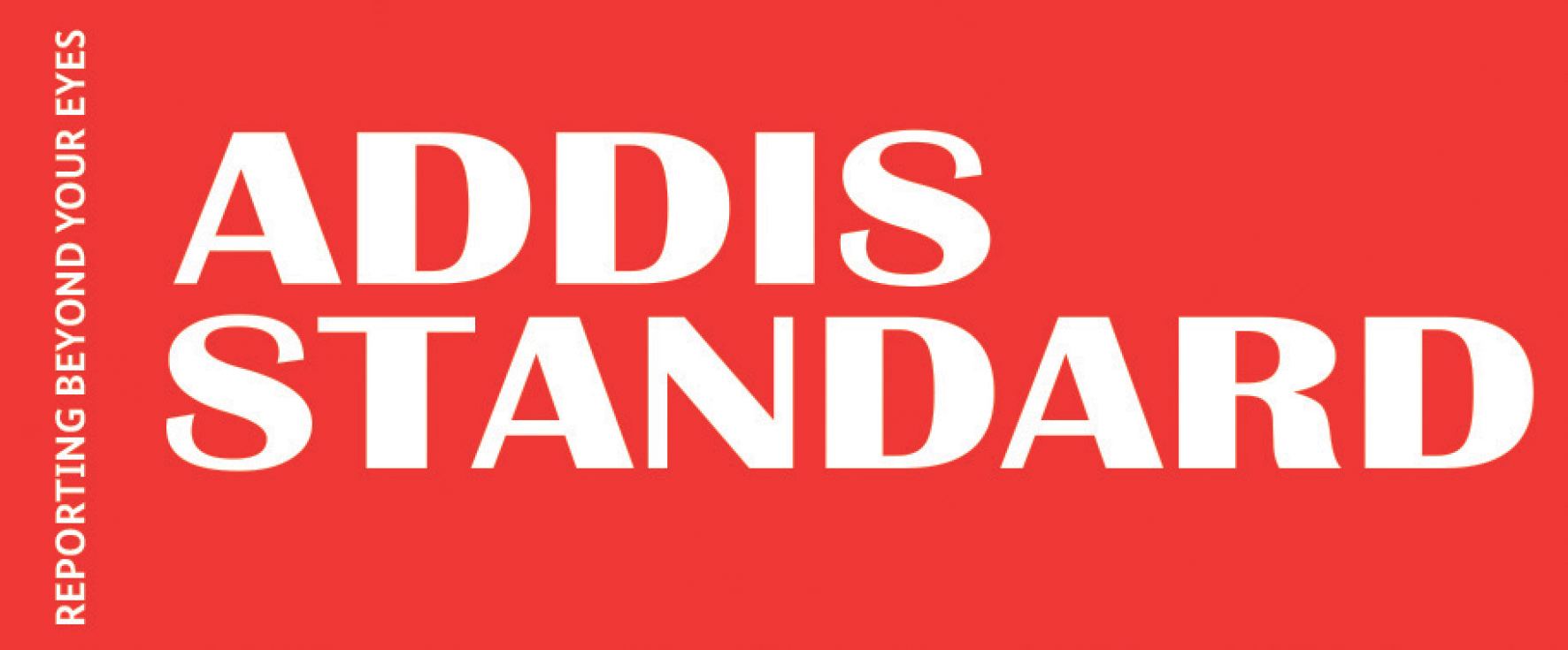News: At least 151,828 people affected by recent floods in Ethiopia

Please click here to download the full report.
Addis Abeba, August 20/2020 – As per the kiremt season (June – September) weather forecast by the National Meteorological Agency, all kiremt rain-receiving areas are getting normal to above normal rainfall. The heavy rainfall and discharge of filled dams in some areas, have caused flooding and landslides, displacing people in several parts of the country.
In western Ethiopia, heavy rainfalls have led to flooding in the lowlands of Gambella region and landslide in East Wollega zone, Oromia region.
In eastern Ethiopia, flooding occurred in Shabelle and Siti zones, Somali region in early August. At least 26 woredas across the region were already affected by flooding in April 2020.
In northern Ethiopia, heavy rains in the highlands of Amhara and Tigray regions, the backflow of the Tendaho dam and the overflow of Awash River continue to pose heightened risk of flooding in Afar region during the remainder of the kiremt season. At least 13 woredas were already affected by flooding in Afar, displacing 40,731 people in July and August.
In southern Ethiopia, flooding in Dawuro, Goffa, Gurage Hadya, Keffa, Silte and South Omo zones of SNNPR in July and August 2020, as well as in West Guji zone of Oromia region in May and August 2020 have led to displacement and loss of livelihood.
Overall, at least 151,828 people were affected by recent floods (July and August), including 100,176 people displaced as of mid-August, including 40,731 people displaced in Afar, 20,868 people displaced in Somali, 1,125 people displaced in Oromia (excluding the 141 people displaced by landslide in East Wollega zone), 25,703 people displaced in SNNP and 11,749 people displaced in Gambella.
The risk of further flooding is high during the remainder of the kiremt season1. The Federal and regional flood task forces continue to implement flood mitigation and response measures, including warning communities in flood-prone areas.
I. Flood/landslide incidents and impact
In Gambella region, heavy kiremt rains led to flooding in four woredas of Agnuak and Nuer zones in July 2020. At least 12,096 people were affected, including 11,749 displaced in Jor (6892 people displaced), Akobo (2460 people displaced) and Wantowa (2397 people displaced) woredas. In addition to the 12,096 people affected by the July 2020 floods, there were at least 7,136 people affected by flooding in 2019 who are still dependent on relief food assistance for survival.
Overall, there are currently 19,232 flood-affected people that require assistance in Gambella region. In addition, 1000 hectares of maize and sorghum cropland was damaged by flooding according to the Jor woreda Agriculture Office; while in Gog woreda, 344.6 hectares of cropland was destroyed. Affected communities are also reportedly suffering from diseases, including pneumonia and malaria. No drugs and bed nets were distributed as of the time of reporting. Twenty-two water schemes are also damaged across the affected area, adding additional burden on women who must travel longer distance to fetch water.
Heavy rains in western Ethiopia also caused repeated landslides in Guto Gida woreda of East Wollega zone (Oromia region). Some 141 displaced people (34 households) are currently living in rented houses in the periphery of Nekemte Town.
Meanwhile in Somali region, flooding on 4 August affected 34,974 people (5,829 households), including 20,868 people displaced (3,478 households) in Kalafo, Mustahil, Ferfer and East Imay woredas of Shabelle zone. Of the total affected, 11,106 people (1,851 households) are surrounded by floodwater. At least 2,388 hectares of cropland are also inundated. Similarly, flooding in Siti zone on 4 August affected 9,000 people (1,500 households) in Erer, Gablalu and Hadhigala woredas. Earlier flooding in the region (April 2020) had affected 404,172 people (67,362 households), including 214,968 people displaced (35,828 households) in 28 woredas across Dawa, Erer, Fafan, Liban and Shabelle zones. More than 34,006 hectares of cropland was totally damaged, and 10,739 livestock killed.
In northern Ethiopia, river and flash floods in July and August 2020 have affected 67,885 people (13,577 households), including 40,731 people (8146 households) displaced in Afar region. Five zones, particularly areas located in the middle and lower Awash River basin are most affected. Some 3,714 livestock have also died, further impacting the food security of the pastoralist communities in the area. According to NMA, heavy rains in the highlands of Amhara and Tigray regions in the coming weeks may lead to further flooding and displacement.
In southern Ethiopia, flooding in Dawuro, Goffa, Gurage Hadya, Keffa, Silte and South Omo zones of SNNPR in July and August 2020 affected 26,748 people, including 25,703 people displaced. Similarly, flooding in West Guji zone of Oromia region in May and August 2020 displaced 1,125 people. West Guji currently has 123,669 flood-affected people and 70,936 flood-displaced people (69,811 of whom are those displaced from previous flood).
II. Assessed multi-sector needs
The Gambella Disaster Prevention and Food Security Sector (DPFSS) and OCHA are currently leading an assessment team comprised of Government, NGO and UN agency representatives. Detailed information on multi-sector needs of the 19,232 flood-affected people in the region (7,136 from last year and 12,096 from this year) will be availed soon. Meanwhile, the 141 people (34 households) displaced in East Wollega zone require food, NFI and shelter assistance.
A multi-agency assessment is currently ongoing in Somali region to gauge the full impact of recent floods and identify humanitarian needs. The joint Government and humanitarian partners team in Siti (zonal administration, OCHA, UNHCR, WFP, OXFAM, Save the children, CHS) and Shabelle (zonal administration, WFP, SCI, AAH, OWDA, OCHA, SOS, WHO) zones are expected to complete the assessment on 19 August.
In Afar region, the Regional DPFSPCO led a team comprised of LANRB, RWB, REB, BOWYCA WFP, CARE and APDA to conduct a rapid flood assessment from 28 July to 5 August 2020 in the two most affected zones (Awsi rasu woreda in Zone 1 and Gabi rasu woreda in Zone 3).
Based on the assessment finding, the regional flood task force prepared a Flood Response Plan to meet the multi-sector needs of the 67,885 affected/40,731 displaced people in the region (see Table 1).
Table1. Afar region flood-related humanitarian needs

The SNNPR Disaster Risk Management Bureau (DRMB) conducted a rapid needs assessment in Dasenech woreda (South Omo zone) in early August 2020 identifying multiple needs including, food, blankets, plastic sheet, utensils and jerrycans. Although a full assessment was not conducted in the other flood-affected woredas, key needs were identified through observations and woreda authorities’ expert reports. The floods have also affected the population’s livelihoods through loss of property/houses, animals, grazing land and seasonal and perennial crops and vegetables. Urgent livelihood support is thus required.
In southern Oromia region, two inter-agency inter-sector assessments were conducted for all areas affected by flooding in May 2020. Amongst others, the assessment findings revealed that 9,882 houses were damaged/ flooded (mostly in Gelana woreda) and 15,428 hectares of cropland inundated, impacting 12,584 households. Reportedly, many IDPs have already returned to their homes where the land has dried. Formal assessment for recent (July and August) floods is being planned for Abaya woreda. Overall, observations indicated that the IDPs sheltered with host communities mostly require shelter and NFI support. Abaya woreda is also known for an underlying cholera incidence (over 110 cases since February, with a relapse in May). The situation may be exacerbated due to the recent floods, warranting additional health and nutrition support. Key cluster partners are working on initiating an assessment as soon as possible.
Overall, the flood-displaced people in southern Oromia require support as follows (see Table 2).
Table2. Southern Oromia region flood-related humanitarian needs

In the medium and long run, an adequate IDP response would have to address:
- Reconstruction of houses and water schemes;
- Cash for livelihood/recovery;
- Water catchment/watershed study (prevention);
- Strengthened hygiene;
- school materials, furniture and WASH facilities;
- Comprehensive study on flood mitigation and prevention in the recurrently affected areas by Government and development partners.
III. Ongoing response and gaps
In Gambella region, Jor woreda administration has provided food support (maize) one month ago but could not meet the full need. Access to the affected population is a challenge as they can only be reached by boat. Financial support to the woreda administration is required to rent additional boats.
In Somali region, preliminary assessment findings put food, shelter and NFI as the priority needs. No assistance has been provided as of the time of this report, although the Somali Regional DRMB is currently preparing to distribute food for the displaced in Shabelle zone and UNHCR NFI kits to 2000 IDPs in Shabelle zone.
In Afar region, the regional Government, in collaboration with CARE disseminated early warning information for communities living along the river bank. The Awash Basin Authority and Regional Bureau of Water maintained dikes and expanded canals. The local construction company (ASER) supported the maintenance of dikes in Afambo woreda. The regional DPFSPCO distributed 1000 quintals of food items (rice, oil, dates and white wheat) and ES/NFI for 1,262 households in Aysaita, Mile, Garani and Dalol woredas. The National Disaster Risk Management Commission (NDRMC) dispatched 6411.26 quintals of food items (corn soya blend (CSB), oil, cereal and dates) and 238,050 ES/NFIs (blanket, plastic sheet, plastic plate, plastic jug, plastic cup and plastic jerry can) benefitting 18,310 people in Mile, Aysaita, Dubti, Awash Fentale, Dulesa and Dalol woredas. The Somali regional Government provided 566 quintals of rice, 350 quintal of floor wheat, 300 cartons of oil, 500 plastic sheets and 620 blankets for the affected people in Asaita woreda. The Ethiopian Red Cross Society provided 1000 quintals of rice, 1000 quintals of macaroni, 50 quintals of wheat, and 150 cartons of pasta. TRANS Ethiopia (EFFORT) Share Company gave Birr 2 million worth of food items (500 quintals of wheat and 2004 oil). The Regional DPFSPCO, NDRMC, together with the Ethiopian Defense Forces evacuated by helicopter 1,149 stranded households in Aysaita, Afambo and Mile woredas.
In SNNPR, the regional and federal DRMC have responded with food and NFIs for the flood-displaced and affected community. In Shashego woreda (Hadyia zone), World Vision International (WVI) has provided food and NFIs and no gaps have been reported. In other woredas, the Government covered at least 70 per cent of the needs. There are no further details on the gaps as per the time of report.
In southern Oromia, the regional Government provided around 80 tons of emergency food. The NGO consortium (JEOP) provided food in Ogo Dambi kebele of Bule Hora woreda (West Guji zone) and is expanding its operation to cover all flood-affected locations in Gelana.
IOM and GOAL run an ad-hoc mobile health and nutrition team (MHNT) service twice a week for flood-affected kebeles of Gelana woreda. The NGO MCMDO temporarily deployed a MHNT in Bule Hora. Meanwhile, IOM prepositioned 180 IV fluid bags for cholera treatment in Abaya woreda.
IOM, CRS, PIN and NDRMC have been providing ES/NFI for 7,883 households in Gelana (leaving a gap of 1,046 households. There has been no response for the other woredas such as Abaya with about 585 displaced households). NDRMC distributed partial ES/NFI kits for 570 households in Gelana (each kit contains a plastic sheet, two blankets, two plastic plates, cooking pot, two plastic cups, a jug and a kettle; most come also with a 20-litre jerry can).
World Vision International supports 500 households with WaSH NFI in Oga Dembi kebele of Bule Hora woreda, cash-for-shelter support for 190 households in Bule Hora, and ES/NFI for 750 households in Gelana. IOM is targeting 12,000 people with communal emergency latrines and 18,400 people (3681 households) with water trucking in six kebeles of Gelana. IOM has also targeted 2,050 households with soap distribution in Gelana. Norwegian Refugee Council (NRC) is targeting 3,000 households for full hygiene kits (without dignity kits) in Gelana. UNICEF distributed WaSH NFI and water treatment chemicals, while working on six water schemes (one borehole and five shallow wells) rehabilitation and 12 water storages (six collapsible and six roto tanks). IRC aims to provide WaSH NFIs, 2 EmWat kits and COVID-19 supplies for 100 households (pending funding approval).
Meanwhile, IOM extended Protection/SMS activities for two months to ensure IDP participation and improved information dissemination to/through community members in Gelana’s Metari, Jirme Metari, Wachu, Tore Magala, Oda Negelle and Shamole Oda kebeles. World Vision International and Danish Refugee Council distributed cash for 2,494 households (WVI 2,124 households and DRC 370 households) in four kebeles of Gelana woreda. More resources have been requested for WaSH, ES/NFI, MHNT, ITN and multi-purpose cash, ideally with focus on affected locations outside the mostly covered Gelana woreda.
| 1 The National Flood Plan1 estimates 2,066,683 people to be affected by river and flash floods during the 2020 kiremt season. Out of which, 434,154 people (21 per cent of the total at risk population) across the country are likely to be displaced. US$ 103,314,395 is required to implement the Plan. See full document here 👉👉 https://bit.ly/2Pr5Vye |




